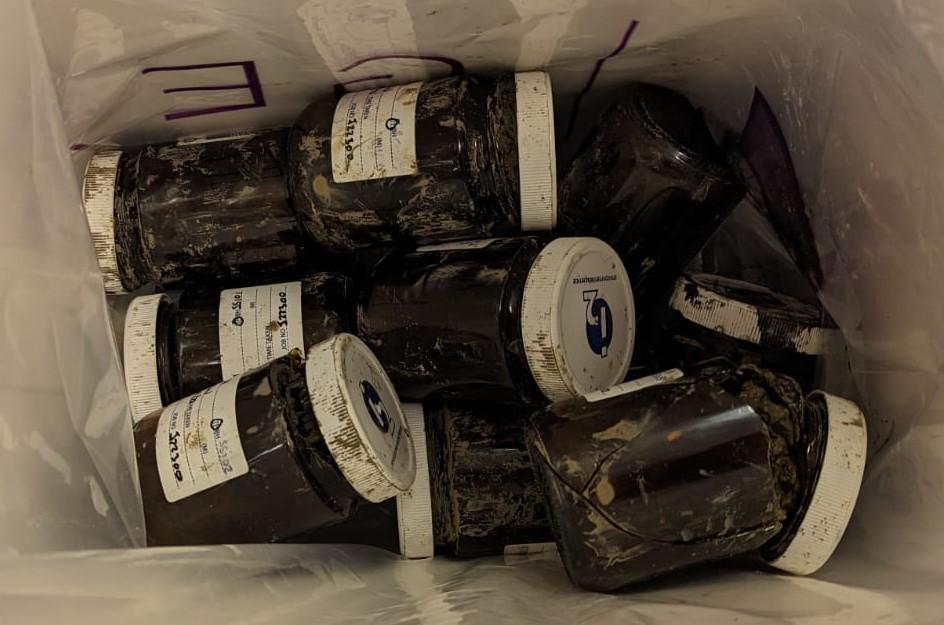
QROS analysers like to go on site, but can happily sit in a lab and produce high quality results in minutes. So we were concerned when these soil samples arrived recently at the QROS lab for same day analysis. Out of eight samples, two bottles were broken and three caps were loose. Also despite being in a cool box with three cold packs, the temperature in the box at 9° was only 2° cooler than the ambient temperature of 11 °. Cross contamination was obviously a major issue, as well as loss of volatile elements such as BTEX from the loosely fitting lids and degradation of samples as they are too warm to be preserved. When sending samples by post it is simply not possible to retain them at a low enough temperature for the day or two they are in transit. This was not a one-off occurrence. Samples frequently arrive at labs in a similar state, and any analysis done of the compromised samples can only be approximate.
Time is critical in effective sample analysis. Using a proven on site analysis method such as the QED means that samples can be tested within minutes of being taken, reflecting accurately the actual contamination present at the site rather than what is in the soil after it has been exposed to air, warmth and cross-contaminants.
The QED is the only on-site analyser for petroleum hydrocarbons that has been shown to be as accurate as good quality laboratory GCMS, but at a fraction of the price and with results available within 2 minutes of taking the sample, which are allowed by the Environment Agency. As well as giving more accurate results, using the QED and XRF for heavy metals analysis avoids costly delays incurred waiting for soil testing results to return. Many companies and some local councils have a QED and XRF from QROS in their own in house lab, and mobile labs are springing up in the UK and elsewhere using these analysers to save time and money for their customers, giving them complete confidence in the results generated.